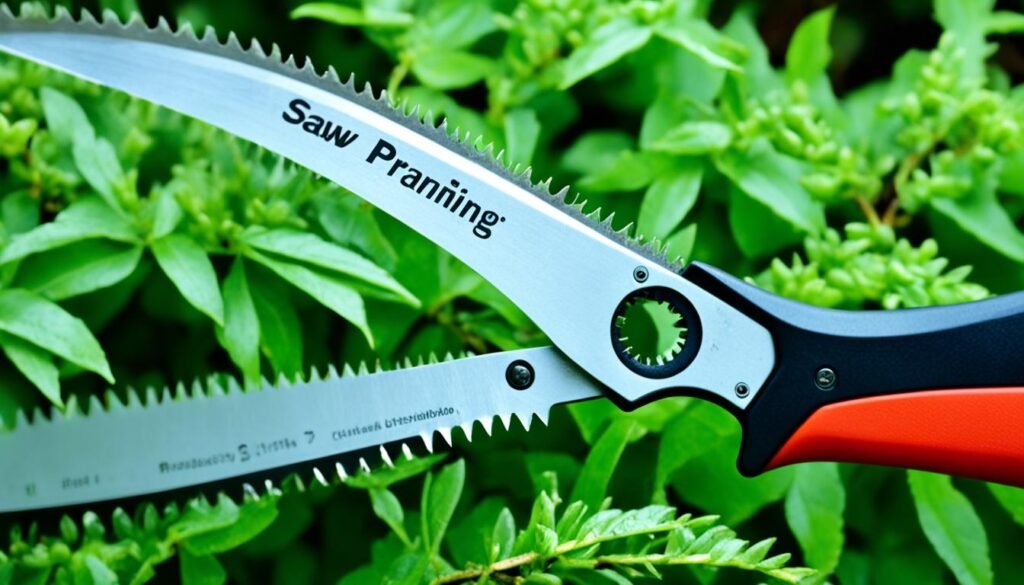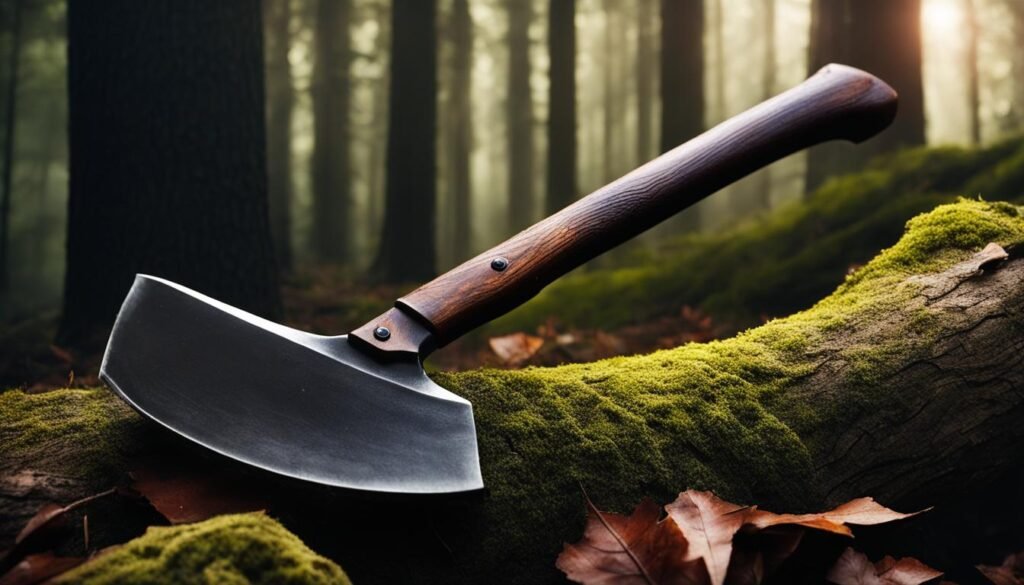When it comes to cutting tree branches, having the right tool is crucial. Not only does it make the process more efficient, but it also ensures safety and effectiveness. Let’s explore the top tools based on versatility, durability, and ease of use.
Chainsaw: The Heavy-Duty Cutting Tool
Chainsaws are heavy-duty tools perfect for cutting larger tree branches. They come in various types such as gas, electric, and battery-powered.
Gas Chainsaws: The most powerful option, ideal for demanding cutting tasks, but heavier and less eco-friendly.
Electric Chainsaws: Lighter and quieter, suitable for smaller jobs and occasional use, eco-friendly.
Battery-powered Chainsaws: Cordless and portable, great for light tasks, but may have shorter battery life.
Remember to prioritize safety and wear protective gear when operating a chainsaw.
Pruning Saw: Versatile and Reliable
Pruning saws come in different types:
Manual Pruning Saw: Portable and perfect for small trimming jobs.
Electric Pruning Saw: Offers more power for larger branches.
Folding Pruning Saw: Handy for outdoor activities due to its compact design.
Pole Pruner: Ideal for hard-to-reach branches without needing a ladder.
Loppers: Cutting Tool for Larger Branches
Loppers are essential for larger branches up to two inches in diameter. Different types include bypass, anvil, and ratchet loppers, each suited to different cutting needs.
When selecting loppers, consider branch size, type, handle length, and quality for optimal performance and longevity.
Pruning Shears: Ideal for Small Branches
Pruning shears are perfect for branches less than one inch in diameter, offering control and precision. Types include bypass and anvil pruning shears, each suitable for live or dead branches.
Invest in high-quality pruning shears with ergonomic handles and replaceable blades for durability.
Pole Saw: Reach High Branches
Pole saws are designed to reach high branches without a ladder, available in manual and electric types. They offer height accessibility, versatility, efficiency, and safety, making them ideal for various cutting tasks.
Ax: Traditional Tool for Chopping Trees
The ax is suitable for chopping trees of all sizes, but it requires physical strength and technique. Not recommended for large trees due to labor intensiveness.
Safety Equipment: Essential for Tree Cutting
Investing in proper safety equipment such as helmets, protective glasses, gloves, and straps is crucial for protecting against hazards and ensuring a safe cutting experience. Following safety procedures and guidelines is equally important for minimizing accidents.
By prioritizing safety and using the appropriate tools, you can ensure a successful and safe tree-cutting experience.
When cutting tree branches, having the right tools is essential for efficiency, safety, and effectiveness. In this guide, we’ll rank the best tools based on their versatility, durability, and ease of use, ensuring you have the perfect tool for any cutting task.
1. Chainsaw: The Heavy-Duty Workhorse
Pros:
- Powerful: Ideal for cutting through large branches and trees.
- Versatile: Available in gas, electric, and battery-powered options to suit different needs.
- Efficient: Gets the job done quickly and effectively, especially for heavy-duty tasks.
Cons:
- Requires Maintenance: Regular maintenance and proper handling are necessary for safe and effective use.
- Safety Concerns: Chainsaws can be dangerous if not used properly, requiring caution and protective gear.
Best for: Cutting large branches and trees efficiently, especially for professional landscapers or homeowners with extensive cutting needs.
2. Pruning Saw: Versatile and Precise
Pros:
- Portable: Easy to maneuver and suitable for smaller trimming jobs.
- Precision: Provides clean and precise cuts, making it ideal for pruning tasks.
- Variety: Available in manual, electric, folding, and pole versions to suit different preferences and needs.
Cons:
- Limited Reach: This may not be suitable for high branches without a pole attachment.
- Less Power: Electric and manual versions may lack the cutting power of chainsaws for thicker branches.
Best for: Pruning and trimming smaller to medium-sized branches with precision and control.
3. Loppers: Cutting Tool for Medium-Sized Branches
Pros:
- Long Handles: Provide leverage for cutting through branches up to two inches in diameter.
- Versatile: Available in bypass, anvil, and ratchet styles for different cutting needs.
- Easy to Use: Requires less effort than manual saws for cutting medium-sized branches.
Cons:
- Limited Reach: This may not be suitable for high branches without a pole attachment.
- Bulkier: Larger and heavier than pruning shears, making them less portable for some users.
Best for: Cutting medium-sized branches with ease and efficiency, especially for homeowners maintaining their landscapes.
4. Pruning Shears: Ideal for Small Branches

Pros:
- Lightweight: Easy to handle and suitable for precise cuts on small branches.
- Scissor-like Design: Provides control and accuracy for shaping shrubs and plants.
- Variety: Available in bypass and anvil styles for different cutting needs.
Cons:
- Limited Cutting Capacity: Not suitable for branches larger than one inch in diameter.
- Manual Operation: Requires physical effort for cutting, which may be tiring for extensive pruning tasks.
Best for: Pruning small branches and shaping plants with precision and control.
5. Pole Saw: Reach High Branches Safely
Pros:
- Long Reach: Allows cutting high branches without a ladder or climbing equipment.
- Electric Options: Offers more cutting power and efficiency for thicker branches.
- Safety: Minimizes the risk of accidents by keeping users safely on the ground.
Cons:
- Limited Mobility: Less maneuverable than handheld saws, especially in dense foliage.
- Requires Power Source: Electric pole saws need power or battery charge access for operation.
Best for: Cutting high branches safely and efficiently, especially for homeowners with tall trees or dense foliage.
6. Ax: Traditional Tool for Chopping Trees

Pros:
- Practical: Suitable for chopping down trees of all sizes with proper technique.
- Durable: Made of sturdy materials for long-lasting use with proper maintenance.
Cons:
- Labor-Intensive: Requires physical strength and technique for practical use.
- Safety Concerns: Axes can be dangerous if not used properly, requiring caution and skill.
Best for: Chopping down trees, especially for those with experience and strength for manual labor.
7. Safety Equipment: Essential for Tree Cutting
Pros:
- Protection: Prevents injuries from falling branches, debris, and accidents during cutting.
- Enhanced Safety: Ensures users can work confidently and securely, minimizing risks.
Cons:
- Cost and Maintenance: Requires investment in proper gear and regular inspection for safety.
Best for Ensuring safety and protection during tree-cutting operations, regardless of the chosen tool.
Conclusion
Selecting the best tool for cutting tree branches depends on your needs, preferences, and skill level. Whether you’re a homeowner maintaining your landscape or a professional landscaper tackling extensive cutting tasks, this list has a tool to suit your requirements.
Remember always to prioritize safety, use the appropriate protective gear, and follow proper cutting techniques for a safe and successful tree-cutting experience.
Author
-

Anne Williams is a passionate wordsmith, blending creativity with expertise in SEO to craft captivating content. With a penchant for concise yet compelling prose, she brings stories to life and leaves readers craving more. When she's not penning her next masterpiece, you can find her exploring new coffee shops or lost in the pages of a good book.
View all posts






